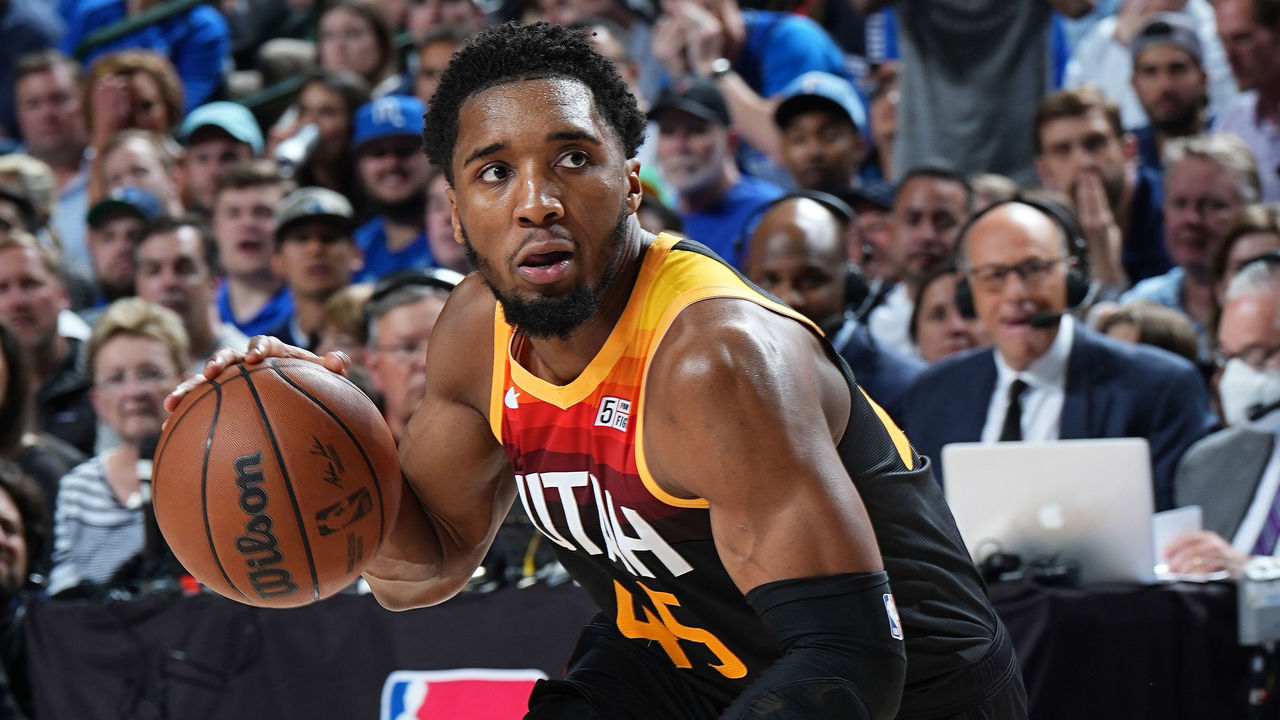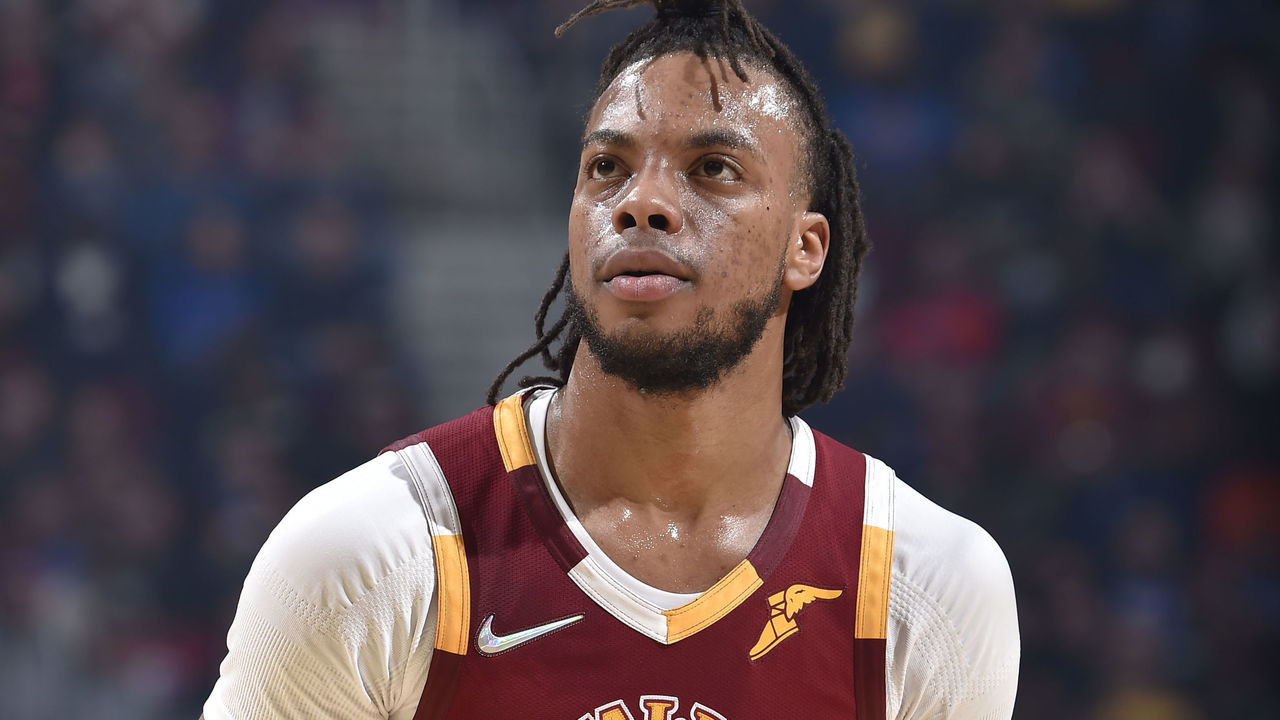Mitchell trade puts the Cavs all-in on guards and bigs. Can it work?
The Cleveland Cavaliers were already one of the NBA's most interesting teams from a roster-building standpoint. Their out-of-left-field acquisition of Donovan Mitchell makes them slightly more conventional - no longer will the 7-foot Lauri Markkanen be playing small forward alongside the twin-towers frontcourt of Jarrett Allen and Evan Mobley. But it also makes them more compelling because it raises their ceiling considerably without impacting their young nucleus.
In the deal, the Cavs are sending Markkanen, restricted free agent Collin Sexton - who's signing a four-year, $72-million contract to facilitate a sign-and-trade - 2022 first-round draftee Ochai Agbaji, three unprotected first-round picks, and two unprotected first-round swaps to Utah. In exchange, Cleveland is getting a 25-year-old three-time All-Star who's under contract for the next three years and is coming off a season in which he powered the league's top-ranked offense.
Mitchell, who joins the ascendent Darius Garland in the backcourt, is now the oldest player in a core group featuring a pair of All-Stars in Garland and Allen, as well as defensive savant and reigning Rookie of the Year runner-up Mobley. All of those players are under team control for the duration of Mitchell's contract.
One thing you may notice about that quartet is that it's entirely composed of guards and bigs, with nary a wing in the bunch. As it was, the Cavs were bucking contemporary lineup trends with their jumbo frontcourt and dearth of conventional wings (hence the Markkanen-at-the-3 experiment). But in bundling the bulk of their trade assets for another small guard, they've considerably narrowed a potential avenue to acquiring the type of two-way swingman who might bridge their backcourt and frontcourt. The roster they've effectively gone all-in to assemble feels a bit like a sandwich without the meat.

That's an admittedly imperfect metaphor that makes things seem worse than they are. For one thing, a Garland/Mitchell/Mobley/Allen quartet makes for some pretty fine bread. Offensively, that group brings a potent combination of creation and finishing ability. Mitchell's playmaking limitations will be less of an issue when he's paired with Garland, one of the league's most gifted passers. After the Cavs ranked 20th in offensive efficiency last year, Mitchell's elite self-creation and pick-and-roll proficiency should send them rocketing up those rankings.
There may be some bumps in the road as he and Garland jockey for ball-handling reps early on, but Mitchell is an excellent second-side operator who should benefit from Garland's creativity as an initiator. Mitchell will probably also appreciate playing next to big men who can consistently do damage against mismatches in the post. We'll see if that leads to him utilizing Allen and Mobley in those spots more than he did Rudy Gobert.
Cleveland asked a ton of Garland after Ricky Rubio tore his ACL in late December, which itself came on the heels of Sexton's early-season ACL tear. Those injuries robbed the Cavs of their only other reliable off-the-dribble creators. Thereafter, Garland ranked fourth in the league in average time of possession at 8.6 minutes per game, trailing only Luka Doncic, James Harden, and Trae Young, the game's pre-eminent heliocentrists. Garland acquitted himself extremely well under the strain of the increased workload, but he'll surely benefit from having a co-lead who can take some of those responsibilities off his plate.
The Cavs' complete lack of secondary ball-handling was the impetus for them dishing out a first-round pick to get Caris LeVert, but LeVert underwhelmed as an inefficient score-first guard and didn't do much to alleviate the team's offensive issues. For the season, Cleveland scored a paltry 103 points per 100 possessions (worse than the 30th-ranked Thunder) with Garland on the bench, compared to 113.6 (equivalent to the eighth-ranked Celtics) with him on the floor. The Rubio injury, coupled with Allen's broken finger down the stretch, tanked a Cavs season that had begun with a ton of promise.

Mitchell brings an entirely different level of shot creation to complement Garland, and the ability to stagger the two should go a long way toward addressing the team's struggles with Garland on the bench. Utah's offensive rating with Mitchell on the floor last season was 117.6.
That offensive boost may come at the cost of the Cavs' fifth-ranked defense, but it's not like Mitchell is replacing some defensive stalwart. Though Markkanen surprisingly played a factor in keeping opposing offenses under wraps in his unique role thanks to his size, he was often overextended chasing quicker players around the perimeter. Having the 6-foot-1 pair of Mitchell and Garland at the point of attack is a porous look, but you can't ask for a better safety net than the one provided by Allen and Mobley.
Some might point out that even an all-time great rim-protector in Gobert struggled to cover for the weak perimeter defenders in front of him in Utah. But the Jazz had zero secondary rim protection. There's a huge difference between having one of those guys and having two.
Cleveland succeeded defensively last season by funneling opponents toward the basket, where one or both of those behemoths would be waiting to swallow them up. To wit: the Cavs allowed the league's sixth-highest rate of rim shots but held opponents to the league's lowest field-goal percentage on those attempts. That said, you'd obviously like to see Mitchell put in more defensive effort than he did in the latter stages of his Jazz tenure because he certainly doesn't lack for physical tools.
As for the wing deficit, the hope is that third-year man Isaac Okoro can expand his offensive game enough as the starting small forward to fill in the blanks. He's a strong defender who showed some improvement as an outside shooter last year, though he did so on low volume while defenses continued to treat him as a non-threat. That's not ideal considering the Cavs will be starting two other non-spacers in Allen and Mobley.
Okoro's a smart cutter, but his shaky touch around the hoop means he can't always take advantage of those opportunities. He's only 21, but there isn't even the hazy outline of an above-average offensive player here yet.

How big a problem is that, really? One concern with missing a big wing-creator archetype is that the Cavs will have nowhere to turn when they run into a playoff opponent with the perimeter size and speed to smother their diminutive backcourt. But between Mitchell's one-on-one scoring ability, Garland's pick-and-roll playmaking, Allen's pick-and-roll finishing, Mobley's high-post passing, and the sprinkles of low-post scrounging they'll get from those two bigs, chances are the offense will make out OK.
As strong a defender as the 6-foot-5 Okoro is, having him be your primary wing stopper with minimal perimeter help feels a bit dicey, even with two stalwarts on the back line. It's reminiscent of the role a similarly undersized Royce O'Neale was asked to play for Mitchell's Jazz teams.
While Allen and Mobley are mobile enough to defend the elite point bigs of the world - like Pascal Siakam, Bam Adebayo, and arguably even Giannis Antetokounmpo - the Cavs won't have much of an answer for the East's jumbo playmaking wings like Kevin Durant, Jayson Tatum, and Jimmy Butler. They might struggle to defend teams with multiple big perimeter creators, like the Celtics, Bucks, and Bulls.
The bench doesn't offer a ton of solutions, either. Lamar Stevens and Dean Wade were solid contributors in limited roles last season, and Cedi Osman has his moments. However, Cleveland's first two players off the pine will likely be LeVert and Kevin Love, another guard and another big, both of whom struggle defensively. When Rubio is ready to return, he'll arguably be next in line in the rotation.
That may not be ideal, but these are the kinds of nits you pick when assessing a good team. Cleveland scraped together 44 wins last season despite having to patch over the same roster deficiency while dealing with a barrage of injuries and a host of other limiting factors that Mitchell will immediately address. All teams have holes, and despite the prevailing sentiment about What Wins in Today's NBA, having one on the wing doesn't have to be a death knell for a team's aspirations of contending.
The Cavs are set up to compete for home-court advantage in the East for at least the next three years. The hope is they'll be good enough during that time to convince Mitchell - a New York native who clearly had eyes for the Knicks - to stick around even longer.
HEADLINES
- SGA: Thunder 'absolutely' want to chase down NBA wins record
- The Spurs are growing up, Keegan Murray is stuck, NBA Cup matters
- The Knicks are figuring things out, and that should scare East rivals
- Curry scores 39 in return, but Warriors fall to Timberwolves
- Embiid drops season-high 39, leads 76ers past Pacers with Maxey out